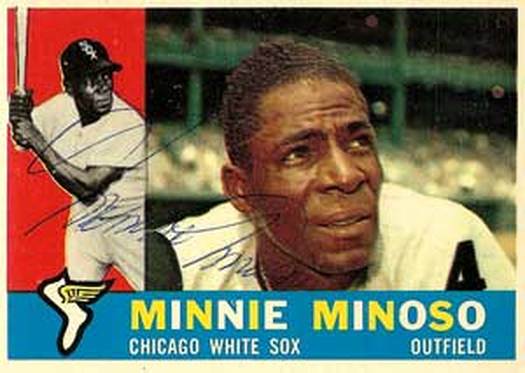|
Okay, so maybe this, on the surface, has nothing to do with reading and/or writing, but... baseball is a metaphor for life. And so it absolutely has everything to do with reading and writing. Today, Chicagoans can celebrate Ron Santo finally getting recognition from Cooperstown and the Baseball Hall of Fame. Unfortunately, the reward is posthumous and several decades late. And the outcome of the "Golden Era" election was hardly a perfect resolution for baseball fans in the Windy City. White Sox great Minnie Minoso was still denied at place in the pantheon of baseball greats and that's an outrageous oversight!
Minoso led the league in steals three times in an era when people didn’t steal a ton of bases. He also led in triples three times and hits once and total bases in another. He racked up 1,963 hits, 186 home runs, and 205 steals. Minoso did not win a major award, and he never played in the postseason. On a superficial level, it’s a very good career, but perhaps not an all-time great one. However, you can’t talk about Minnie Minoso’s case for Cooperstown without getting into his history in other circuits, playing at a time when opportunity was not equal, thanks to matters of race and the reserve clause. His first three years as a pro were spent in his homeland of Cuba (1943-45). He played three more years in the Negro Leagues for the New York Cubans (1946-1948) and then played in the minor leagues because the Indians felt they were already set in the outfield. Minoso got his real break in 1951 after getting sent to the White Sox in a three-way deal. Minoso was already 28 years old. As a result, Minoso was already well through the years that are supposed to be a player’s peak seasons, years he hadn’t gotten to spend in the majors due to racism. We can't speculate how much of his career was lost to that. Despite this late start, Minoso took off on a 10-year run that marked him as one of the best players in the American League. Minoso was a trailblazer as baseball’s first great black Latin player as well as the first black man to play for the White Sox. His popularity in Chicago was astounding, as he was widely acknowledged as the reason the White Sox attendance crossed a million for the first time in franchise history in 1951, and then stayed there throughout the decade of the 1950s. He was a major cause for South Side pride! Did I ever get to see him play? Of course not. But I listened to many stories at my father's knee as to his greatness, both as a baseball player and as a gentleman. He was ever a positive team force, and had a smile for everyone. The Hall needs to add him while he's still around to truly appreciate the honor!
0 Comments
|
AuthorTo find out more about me, click on the Not Your Average Jo tab. Archives
February 2024
Categories
All
|

 RSS Feed
RSS Feed